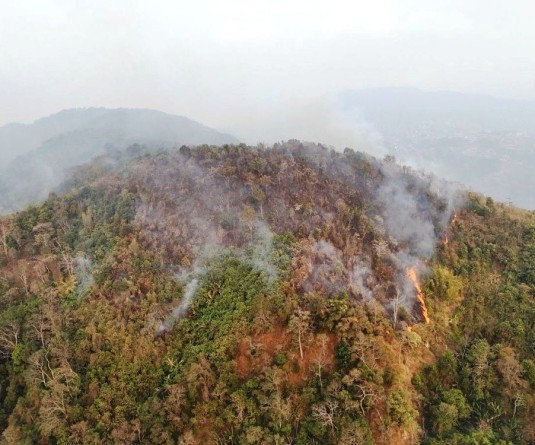
Our Correspondent
Kohima | April 3
Under the National School Safety Programme, the state education department with support from the district/local administration called for the adoption of school safety plans at two levels- A district wide school safety plan and a school building level emergency preparedness and response plan.
This was stated in the manual for 'Training of Trainers' under the National School Safety Programme which got underway here today under the aegis of the Nagaland State Disaster Management Authority (NSDMA) in collaboration with the district administration and the District Education Office.
The goal of the programme is to promote a culture of disaster preparedness in the school community. Its objective is to sensitize children and the school community on issues of disaster preparedness and safety measures. It also aims to motivate key stakeholders through direct participation in activities that would foster towards a disaster resilient community.
The concept of adopting school plans at two levels is a suggestive model to carry the safety initiative in schools. The suggestive model is under implementation on a pilot basis in many parts of the country as part of the ongoing initiatives in field of mitigation and preparedness under GoI-UNDP 'Disaster Risk Management programmes.'
The manual said that amongst all the public facilities, children in schools are among the most vulnerable groups during any disaster. A large number of municipal and privately managed schools operate in various urban centres, many of which are built in congested areas and are exposed to various hazards.
“Further adding to the vulnerability is the improper sitting of these buildings. Inadequacies in structure and lack of preparedness measures can have disastrous consequences in the event of an earthquake,” it said.
Speaking at the introductory session this morning, Khrolou Koza Lohe, Training and Capacity Building Officer, NSDMA said that 971 students and 31 teachers died in the 2001 Bhui Earthquake.
1,884 school buildings collapsed with a loss of 5,950 classrooms. 11,761 school buildings suffered major to minor damages and an additional 36, 584 rooms were unfit for holding instruction sessions.
300 children marching in the Republic Day processions in the narrow lanes were killed when buildings collapsed into the narrow street from both sides. There were reports of children running towards the school building from the open ground fearing a bomb blast when the ground started
shaking.
She also stated that on December 23, 1995, nearly 425 people, many of them school children perished as they tried to escape the flames during a school prize giving ceremony in the town of Dabwali, Haryana. Also in Kumbakonam, a deadly fire raged through Lord Krishna School, killing 93 children, all below the age of 11 years.
She stressed on the need to learn from such earlier tragedies and make the schools a safer place for children.
Thejangulie Zao, District Project Officer, NSDMA said the training was designed to train 30 teachers hailing from different schools in Kohima district, who will later train another 200 in the district.
Five master trainers from Nagaland who recieved necessary training from Delhi recently, will conduct this four day long programme, which will conclude on April 6.
The training will touch on basic concepts of disaster management by Peleno, overview of NSSP & DM plan by Metozo, impact of disaster on school children by Khrienyuhunuo, structural safety in school by Mhasikholie and assessment of school building for retrofitting by S.K. Pal.
The fire and emergency services will also give demonstration on fire safety in school while civil defense and home guards will talk on survival skills, first aid and search & rescue.






